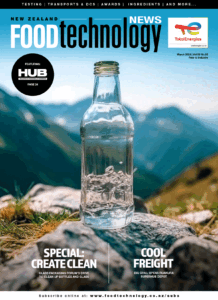
Infringement penalties can include: a minimum fine of $1,000, loss of accredited employer or Recognised Seasonal Employer status, and being banned (stood-down) from supporting further visas for migrant workers for a period of time depending on the number of infringement notices the employer receives. More serious breaches may result in criminal charges.
Being stood-down means employers cannot get their accreditation back or support visa applications during the stand-down period. Stand-down periods include: six-month stand-down for a single infringement notice, an extra six-month stand-down for each subsequent infringement notice and a 12-month maximum stand-down for multiple notices issued at one time.
Employers can hire migrants on open work visas while on the stand-down list. When the stand-down ends the employer must show they have rectified the matter and done what is needed to stop it happening again before they can get accredited again under the AEWV.
Stephanie Greathead, national manager immigration compliance says the majority of employers do the right thing and the employment situation works well for both employer and the migrant worker. However, Immigration sees a small number of employers who aren’t following the rules.
“In the past the only real significant deterrent option available to Immigration was prosecuting employers through the criminal court system, while that is still something we will continue to do, being able to issue employers with infringement penalties allows us to take immediate action against employers who aren’t complying.
“We will be publishing a stand down list on the Immigration website naming those employers who have been penalised and stood down, this adds a layer of transparency,” Greathead says.
Infringements can be issued for employing people in breach of their visa conditions, employing a person unlawfully in New Zealand, or failing to comply with a 10-day information request.
“Non-compliance with these three requirements now has immediate consequences. The new tools make it easier to stop employers who have committed immigration offences from accessing migrant workers in the future. It also ensures we have strong systems in place to enforce employment and immigration standards, which will help create a fair and level playing field for all employers in New Zealand,” Greathead says.
The Employers and Manufacturers Association (EMA) says that the immigration changes will still cause concerns for some employers and could result in difficulties in filling key roles.
EMA Head of Advocacy Alan McDonald says while unemployment has started to rise with the slowing economy, many businesses are still struggling to find the skilled and experienced workers that they need.
“New Zealand still has shortages of truck drivers, health care workers and construction workers, while not going ahead with placing occupations such as welders and fitters and turners on the Green List could cause some shorter-term issues while employers find and train up suitable local staff,” says McDonald.
“We are supportive of ensuring we are bringing in the right workers, and that they are not exploited, but we do need to make sure we get the balance right.
“Making it harder for motivated workers to come into New Zealand means they will go somewhere else, that hurts business and means our economy misses out.
“The reality is our population is aging rapidly, is highly educated and we are losing many young people to Australia. As a result, we don’t have the workers to do some of the jobs that are unfairly categorised as unskilled.
“These jobs make an important contribution to our economy, and we still need them. This latest round of changes further highlights the need to settle on a stable, long-term migration policy.
“Continual tinkering with the current settings is off-putting for potential skilled migrations considering New Zealand and confusing for employers who are trying to do the right thing but struggling to keep up with the rules.
“Net migration rates were very high in the last year, and this was the result of the migration system playing catch-up following the closure of the border during the pandemic. But the government’s own forecast showed that they were going to fall back towards the long-term average over the next couple of years,” says McDonald.
“Measures to reduce potential exploitation are welcome and reducing the costs to employers is also good timing.”






























































































